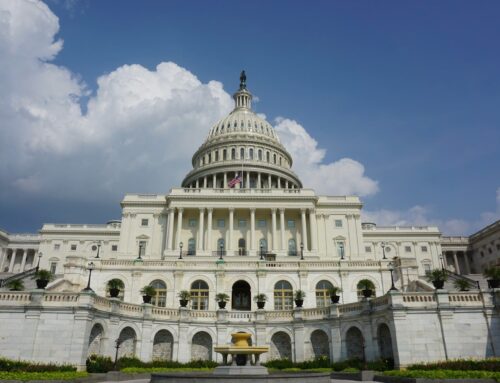As Congress prepares to return from its annual August recess, the looming threat of a potential government shutdown hangs over the United States. Unless Congress approves additional funding beforehand, the federal government will shut down on October 1, 2023. It’s pretty clear that lawmakers are not going to pass the 12 appropriations bills required to fund government operations before the new fiscal year starts. So far, the House has passed only one FY 2024 appropriations bill and the Senate has passed none.
The stakes are high, and time is running out; Congress has only 18 workdays remaining before the end of the fiscal year.
So-called “regular order” is passing all the bills individually and before the start of the fiscal year. The reality has been irregular order. Since the current budget process was created nearly 50 years ago Congress has only four times managed to pass all the spending bills before the end of the fiscal year: in 1977, 1989, 1995, and 1997. The last time all were passed individually and on time—regular order? 1994. Since 1997, however, Congress has frequently failed to pass all appropriations bills on time, often relying on stopgap measures like continuing resolutions and omnibus spending bills. Speaker Kevin McCarthy (R-CA) has suggested that Congress will likely pass a short-term funding bill to avert a shutdown this fall, although the length and deadline of this stopgap measure remain uncertain.
Government shutdowns are a disastrous idea, impacting far more than just government services. For example, nearly 1.9 million Americans work for the federal government, only about 15% of whom reside in the DC metro area. A shutdown would mean that many of these workers would go without paychecks, despite eventually being compensated, leading to millions of dollars in lost productivity. It’s not the workers’ fault, but it is a double whammy for taxpayers, paying them for work not done.
The economic toll of shutdowns is also significant. Credit rating group Standard and Poor’s estimated that the 2013 government shutdown cost a 0.2-0.6 percent growth reduction in the fourth quarter of 2013. The 2013 shutdown lasted 16 days. The Congressional Budget Office estimates that the 35-day shutdown in 2019 slowed growth in the fourth quarter of 2018 by 0.1 percent and in the first quarter of 2019 by 0.2 percent, costing the U.S. economy an astonishing $11 billion, with $3 billion lost permanently.
These numbers translate into real hardships for small businesses, federal employees, and individual taxpayers. The disruption in services and funding delays can result in lost profits, postponed compensation, and diminished government services. During the 2019 shutdown alone, about $18 billion in federal discretionary spending was delayed, further stressing the economy.
Shutdowns also affect small businesses through delayed IRS services and hindered access to small business loans, causing financial strain. Federal workers face cascading financial challenges due to delayed pay, while private-sector entities losing business during a shutdown experience tangible setbacks.
As recently as June, it didn’t look like the nation would be facing a shutdown at the end of this fiscal year. In addition to lifting the debt ceiling, the Fiscal Responsibility Act set spending levels for fiscal years 2024 and 2025. That hard part of negotiating between a Republican House and Democratic Senate and White House was done. Or so we thought. A faction of the House Republicans are treating the agreed upon caps as just that—caps—and demanding further reduced spending. In addition, all manner of policy riders litters the bills. Unsurprisingly, Senate majority Democrats and the White House are not going along.
While a few members of Speaker McCarthy’s conference have been cheering a shutdown unless they get their cuts, the recent disasters—fires in Hawaii, Tropical Storm Hilary in California, and Hurricane Idalia in Florida and the Southeast—will likely build up demand for supplemental appropriations that can carry a continuing resolution over lawmaker holdouts.
And while continuing resolutions negatively impact government operations, they are nowhere near as harmful and costly as a shutdown. But in reality, Congress needs to do a better job of getting their appropriations house in order.











Get Social